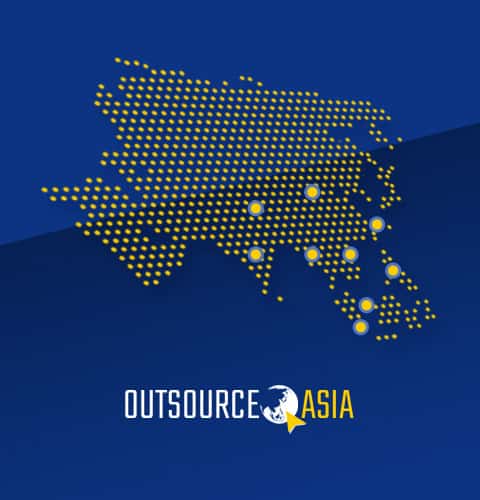Running a business today isn’t just about staying ahead—it’s about staying smart. With constant economic shifts, a war for top talent, and ever-growing expectations from customers and investors, leaders are feeling the pressure to grow quickly and sustainably. In this climate, outsourcing has moved far beyond being just a cost-cutting tool—it’s become a smart, strategic lever for scaling.
Gone are the days when outsourcing simply meant sending work overseas for cheaper labor. Today, it’s about unlocking access to specialized expertise, increasing operational agility, and enabling your team to double down on what they do best. When done right, outsourcing isn’t just a support function—it’s a growth accelerator.
In this article, we’ll break down how to use outsourcing as a sustainable scaling strategy. You’ll learn where it adds the most value, how to choose the right partners, and how to manage those relationships to support long-term success.
Why Strategic Outsourcing Supports Long-Term Growth
True sustainable growth isn’t just about getting bigger—it’s about getting smarter, more efficient, and more innovative. Strategic outsourcing helps by:
1. Tapping into Top-Tier Talent:
Need a cybersecurity expert or a creative content team? Outsourcing gives you instant access to niche skills that would be expensive or hard to build in-house. It’s a fast, flexible way to elevate quality and speed without long-term overhead.
2. Boosting Flexibility:
Markets shift. Projects change. Outsourcing gives you the ability to scale up or down quickly, without the slow ramp-up or downsize that internal teams require. This kind of agility is crucial during growth phases or unpredictable cycles.
3. Focusing on What You Do Best:
Your competitive edge probably isn’t in data entry or IT support. Outsourcing routine or specialized non-core functions frees up your internal teams to focus on what truly drives your business forward—whether that’s product innovation, customer experience, or strategic growth.
4. Optimizing Costs:
Sure, saving money still matters. Outsourcing can turn fixed costs (like full-time salaries and office space) into variable ones, giving you more financial flexibility. The savings can then be reinvested into growth areas like R&D or marketing.
5. Reducing Risk:
Great outsourcing partners come with tested systems, compliance knowledge, and mature infrastructure. That means fewer growing pains as you expand into new territories or service areas—and fewer compliance headaches to boot.
What Should You Outsource?
Not everything should be outsourced. The best candidates are functions that:
- Aren’t core to your competitive advantage
- Require hard-to-find or expensive expertise
- Have workflows that are repeatable and scalable
- Experience fluctuating demand
Common areas where outsourcing makes sense:
- IT Services: From day-to-day support to high-end cybersecurity and software development, outsourcing keeps you ahead of the tech curve without blowing up your budget.
- Customer Support: Need 24/7, multilingual support? Outsourcing lets you scale service teams fast and improve customer experience as you grow.
- Marketing & Creative: SEO, paid ads, content creation, design—there are plenty of boutique firms and agencies that can deliver results without you needing to hire a team for each channel.
- Admin & Back Office: Tasks like bookkeeping, payroll, and data entry are important but time-consuming. Letting others handle them frees your team to work on high-impact projects.
- Logistics & Supply Chain: Third-party logistics (3PL) providers can manage warehousing, shipping, and inventory far more efficiently than a growing business can do in-house.
Quick self-check:
Ask yourself: Is this function a core differentiator? Is it hard or expensive to build in-house? Does it experience peaks and valleys in workload? If the answers are no-yes-yes, it’s likely a good fit for outsourcing.
Choosing the Right Outsourcing Partner
Think of this not as a vendor relationship, but as a long-term partnership. The wrong provider can slow you down. The right one can help you scale faster and smarter. Here’s what to look for:
- Proven Expertise: They should have a track record in your industry and the specific services you need. Ask for case studies or client references.
- Cultural Fit & Communication Style: Do their values align with yours? Do they communicate clearly and consistently? Poor communication is one of the top reasons outsourcing relationships fail.
- Strong Processes & Tools: Review their systems and tech. Do they have the capacity to grow with you? Are their quality controls and workflows transparent and reliable?
- Security & Compliance: Don’t skip due diligence here. Make sure their data handling, security protocols, and compliance standards meet your needs.
- Financial Stability: You need a partner that’s built for the long haul. Check their stability before committing.
- Scalability: Can they grow with you—and adapt quickly when your needs change? Make sure this is discussed upfront.
Test the waters with a pilot project if needed. It’s a great way to gauge compatibility without a full commitment.
Structuring the Partnership for Success
Once you’ve found the right partner, don’t leave things vague. A strong contract and clear communication framework are key.
Build a Smart Contract:
Include the following:
- Scope of Work (SOW)
- Service Level Agreements (SLAs) with performance metrics
- Data security and IP ownership terms
- Confidentiality and termination clauses
- Dispute resolution steps
- Flexibility to evolve the contract as your business scales
Set Up Reliable Communication:
Establish regular check-ins, reporting formats, and escalation protocols. Transparency builds trust and helps you spot issues early—before they become bigger problems.
Managing the Relationship Over Time
Outsourcing isn’t a “set it and forget it” deal. Ongoing engagement is what makes it work long-term.
- Track Performance: Measure against KPIs set in your SLAs. Are targets being hit? What’s the impact on your broader business goals?
- Promote Continuous Improvement: Encourage your partner to share suggestions. Many have insights from working with similar companies—they can help you streamline and grow.
- Review Risks Proactively: Identify potential risks and have mitigation plans in place. This includes things like overdependence on a single provider or key personnel.
- Treat Them Like a Team Member: Don’t treat your partner like a vendor—treat them like an extension of your internal team. Shared success drives better outcomes for both sides.
Common Challenges (and How to Handle Them)
Every strategy has potential pitfalls. Here are a few to keep on your radar:
- Time Zones & Communication Gaps: Bridge the gap with overlapping work hours, shared tools (like Slack or Teams), and clearly defined protocols.
- Quality Control: Use defined SLAs, regular audits, and occasional spot checks to maintain high standards.
- Data Protection: Use NDAs, secure platforms, and strict access protocols to safeguard your IP.
- Over-Reliance on One Partner: If a provider handles a critical function, build contingency plans—or consider diversifying vendors.
Final Thoughts
Outsourcing, when done strategically, isn’t just a way to save money—it’s a way to grow smarter. By identifying the right functions to outsource, choosing your partners carefully, and managing those relationships with clear communication and shared goals, you’re not just checking a box. You’re building a business that’s leaner, more agile, and positioned for sustainable success.
In a world that’s moving fast, outsourcing is no longer optional. It’s a strategic imperative for businesses ready to scale—and stay strong for the long haul.
Ready to leverage Asia’s outsourcing potential?
Contact Outsource Asia today to discover how we can help your business thrive with customized, AI-driven outsourcing solutions.


